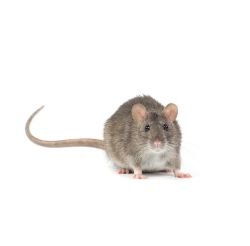Norway Rats

Identification
In terms of colour, Norway rats typically have brownish-gray fur that is coarse and shaggy.
Norway rats can grow up to 19 inches in length with their tails.
Norway rats have a robust physique that makes them excellent diggers; their sharp claws allow them to burrow through soil, crawl through tight spaces, and create underground nests.
Get A Free Quote
We are affordable Pest Control Service in GTA & Surroundings Areas.
Habitat
Norway rats, also known as brown rats, have adapted to live in various habitats. They prefer to nest in underground tunnels and burrows that they excavate themselves, but they can also be found living in sewers, basements, and other dark and humid places. These rodents are highly adaptable and thrive in urban and rural environments.
Like Rabbits, their burrows can range from simple burrows to complex networks of tunnels that extend several meters underground. These nests provide them shelter from predators and harsh weather conditions. They also have a keen sense of smell, which makes it easier to find food sources such as garbage cans or dumpsters.
Norway rats are social creatures that live in colonies with up to 100 individuals. They establish territories within their burrows where they raise their young ones, store food, and rest after foraging activities. Their nesting habits make them difficult to control once they infest an area because they reproduce quickly and spread diseases through their urine and feces. Therefore, taking measures early on is essential when you notice signs of Norway rat activity around your home or property.
Behaviour
Norway rats are known for their nocturnal habits and active behaviour at night. They are opportunistic feeders who consume any food available, including pet food, garbage, and stored grains. Their diet also includes insects, small animals, and other rodents. Due to their voracious appetite and quick breeding cycle, Norway rats can quickly become a nuisance for homeowners and businesses.
In addition to eating food, Norway rats can cause damage by burrowing through walls or floors to create nests. These nests can be found in basements, attics, crawl spaces or outdoor areas such as gardens or piles of wood. The gnawing of electrical wires is also a common problem caused by these pests.
The most concerning aspect of Norway rat behaviour is their role in spreading diseases like leptospirosis, hantavirus pulmonary syndrome (HPS), tularemia and salmonellosis. They carry these diseases on their fur or in their droppings which can contaminate food sources or surfaces within your home or business premises. Therefore, it’s important to take necessary steps, such as sealing up entry points around your building so that they cannot get inside, as well as maintaining cleanliness around the property that may deter them from nestling there in the first place.
Difference between a Norway Rat vs Roof Rat
Norway rats, also known as brown or sewer rats, are larger and more aggressive than roof rats. They have blunt noses, small ears that barely reach their eyes when pulled down, and a body length of up to 10 inches. Norway rats are brown to gray in colour with scattered black hairs on their fur. They prefer ground-level nesting sites such as burrows in soil or under concrete slabs.
Norway rats have been found worldwide and can carry many diseases harmful to humans, including Salmonella and Leptospirosis. They are also known for causing extensive damage by gnawing on electrical wires and wood structures. Due to their fast breeding rates, Norway rat infestations often require professional pest control services.
In conclusion, distinguishing between Norway rats vs roof rat is important for effective pest management strategies. The physical differences allow for targeted treatment methods specific to each species while understanding their behaviours can aid in prevention efforts against future infestations.
Residential Pest Control Service
Customized pest control treatments can be used to safeguard your living space against bothersome pests and ensure that they don’t become a nuisance in your home.
Damage: What Norway rats do to your home and how to prevent it
Norway rats are infamous for causing damage to homes in various ways. They have strong teeth that can gnaw through plastic, wood and even some metals. These rats can cause significant structural damage by burrowing through buildings’ walls, floors and foundations. Their burrows can weaken the foundation of your house and create an entry point for water, leading to moisture problems.
One of the main ways to prevent Norway rat infestations is by sealing all potential entry points into your home. This includes repairing any cracks or gaps in walls or foundations and ensuring that doors and windows are properly locked. It is also important to keep food sources inaccessible, such as storing food in airtight containers and keeping trash cans securely closed.
Another method for preventing Norway rat problems is by maintaining cleanliness around your home’s perimeter. Overgrown vegetation or debris piles provide easy hiding places for rodents, so it’s best to keep these areas under control. If you suspect Norway rat activity in your home, contact ACME Pest Solutions immediately before the problem grows out of hand.
